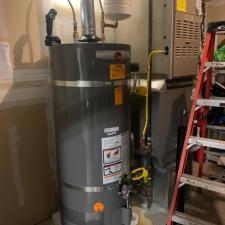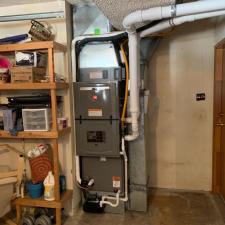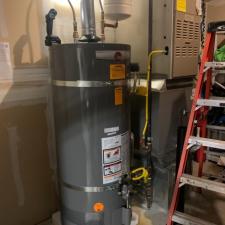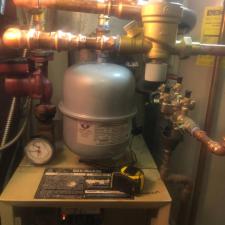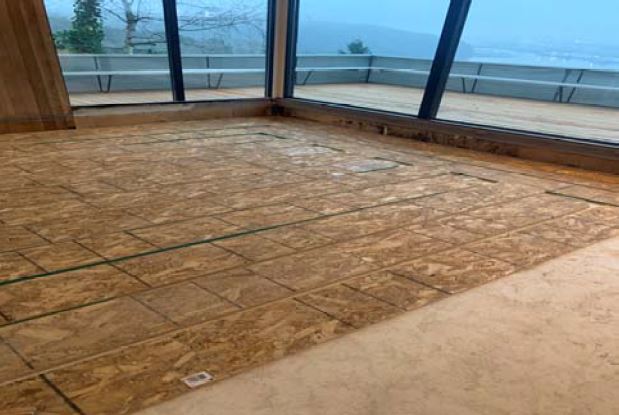The Importance of Proper Commissioning of New Furnaces, Water Heaters and Boilers

Robert Bridgman, President/Founder HVAC Service Pros
I am writing this article with the intention of educating homeowners, business owners, real estate
agents and anyone who may need this information. This is written from my perspective of what I run
into, day in and day out, as a licensed service technician. This is in no way intended as a do it yourself
guide on commissioning processes, it is simply to educate you on the necessity of making sure that it is
performed.
First off let me say that proper commissioning of any and all new, and even existing HVAC equipment is
an absolute must! Which is often overlooked in so many of the installations I have come across in the
course of my 35 career. Time and time again, we run into equipment that has pre‐maturely come to the
point of being no longer practical to repair, all due to either ignorance or just plain laziness of the
installing contractor that performed the initial work.
The most critical, and often times the most overlooked pieces of equipment are gas/fuel burning
equipment, be it Natural gas, Propane, or Oil. These appliances if not properly set up, from the
perspectives of proper combustion and proper airflow, will end up costing the property owner many
more times what they paid to have it installed, in lost efficiency, repairs, and ultimately the need to
prematurely replace it. They also carry the most risk from the perspectives of loss of life or property.
These are the tests and adjustments that must be made on a fuel burning appliance and the proper
operating parameters vary based upon each individual manufacturer and individual model.
#1. Proper fuel Pressure; Both the inlet pressure coming to the appliance and what is known as the
“manifold” pressure, which is on the outlet side of the gas control valve inside the appliance, must be
verified and adjusted to proper factory spec’s, (some pieces of equipment that have multiple stages,
will require that the high fire and the low fire rates both be tested and adjusted). This initial test puts
the system into a target window of acceptable fire rate, but wait there’s still more to be done.
#2. A combustion analysis; This needs to be performed to insure that proper combustion is actually
occurring within the range of specified acceptable limits, and this is where the “fine tuning” of the
manifold pressure comes into play. A combustion analysis, measures the amount of oxygen, carbon
dioxide, and carbon monoxide, as well as what is called free air, in the exhaust or flue gasses that are
being produced and expelled from your appliance. Once you have proper combustion occurring, it
should be checked at the very least on a yearly basis and if needed, adjustments be made.
#3. A draft test; this is performed to ensure that those now proper combustion gases are actually
making their way out of your home and or business. This is achieved in a variety of ways the most
popular way is via what is called a manometer reading, a manometer is a tool that can measure very
slight pressure differences. The exhaust or flue piping needs to be proven to have a negative pressure as
compared to the location of the appliance.
#4. Airflow testing; If your appliance is connected to a duct system, and most in our region are, then at a
bare minimum static pressure readings need to be made on both the supply and the return ducts
coming to the furnace or, air handler in the case of a heat pump system. In order to insure that the
correct amount of air is flowing through your heat exchanger or indoor air coil in the case of a heat
pump system. There are multiple ways to adjust the airflow, again these vary based on manufacturer
and model. Various types of adjustment include; sheave adjustments, (or pulley in layman’s terms), dip
switch adjustments, speed tap adjustments on multi speed motors, and in some more drastic instances
duct work adjustments or modifications, which could include, new or larger ducts, as well as changes in
filter types and or sizes.
#5. Electrical Testing; Making sure that the appliance has the proper amount of voltage, that the
polarity of the voltage is correct, proper means of grounding and bonding are in place, proper over
current protection is in place, and having a proper means of a service disconnect switch, are all critical
things that are far too often overlooked. On top of all of that the installing contractor should test and
record the Amperage draw of the blower motor to insure its within tolerance and to establish a
baseline.
Before closing, I want to tell you this and I can’t stress this enough!! The two things that you as a
homeowner can do to insure the longevity of your system and minimize your utility bills, is number #1‐
have your system re‐commissioned by a contractor who can intelligently speak with you regarding all of
the above steps and procedures, one who has the proper equipment and abilities to do so. #2‐Change
your air filters frequently, even if they don’t appear to be dirty. Lack of airflow through a gas fired heat
exchanger is the fastest way to needing a heat exchanger replacement. Which by the way can run
anywhere from $1,500 dollars and up into the multiples of thousands of dollars if you have a high
efficiency system. Even more critical are heat pump and or A/C systems. Plugged up filters and coils, are
the number one killer of compressors. The average homeowner can look forward to anywhere’s from
$3,500 to $5,000 to replace a compressor. Filters are cheap compared to these types of failures.
Let’s get back to closing this article up. If and only if, all of the above mentioned steps and procedures
are performed at the time of installation, and are routinely checked and adjusted, will you have a fuel
burning appliance that is safe, operates at its most optimal efficiency level, and will continue to run for
many years, with far less likelihood of the need for major repairs.
I want to thank you for reading all the way through to the end. I hope you found it educational or
maybe even enlightening. Please remember when your comparing your bids to ask if all of these things
are included, and don’t be afraid to test the knowledge of the individual trying to sell you his or her low
number, in regards to what you now know. I think you’ll be surprised just how few contractors out there
know what you have just learned.
Sincerely,
Robert Bridgman
President/Founder; HVAC Service Pros

